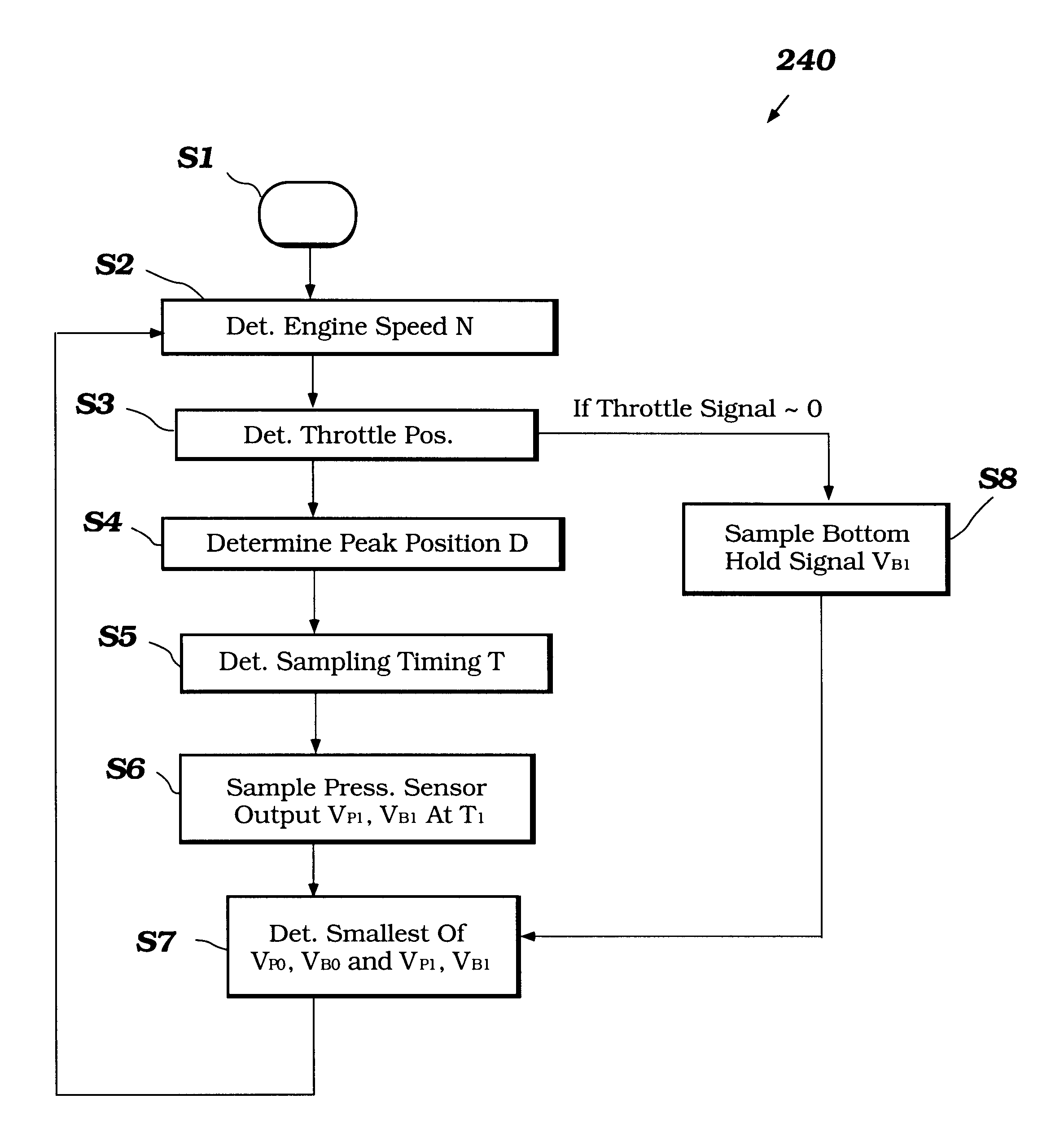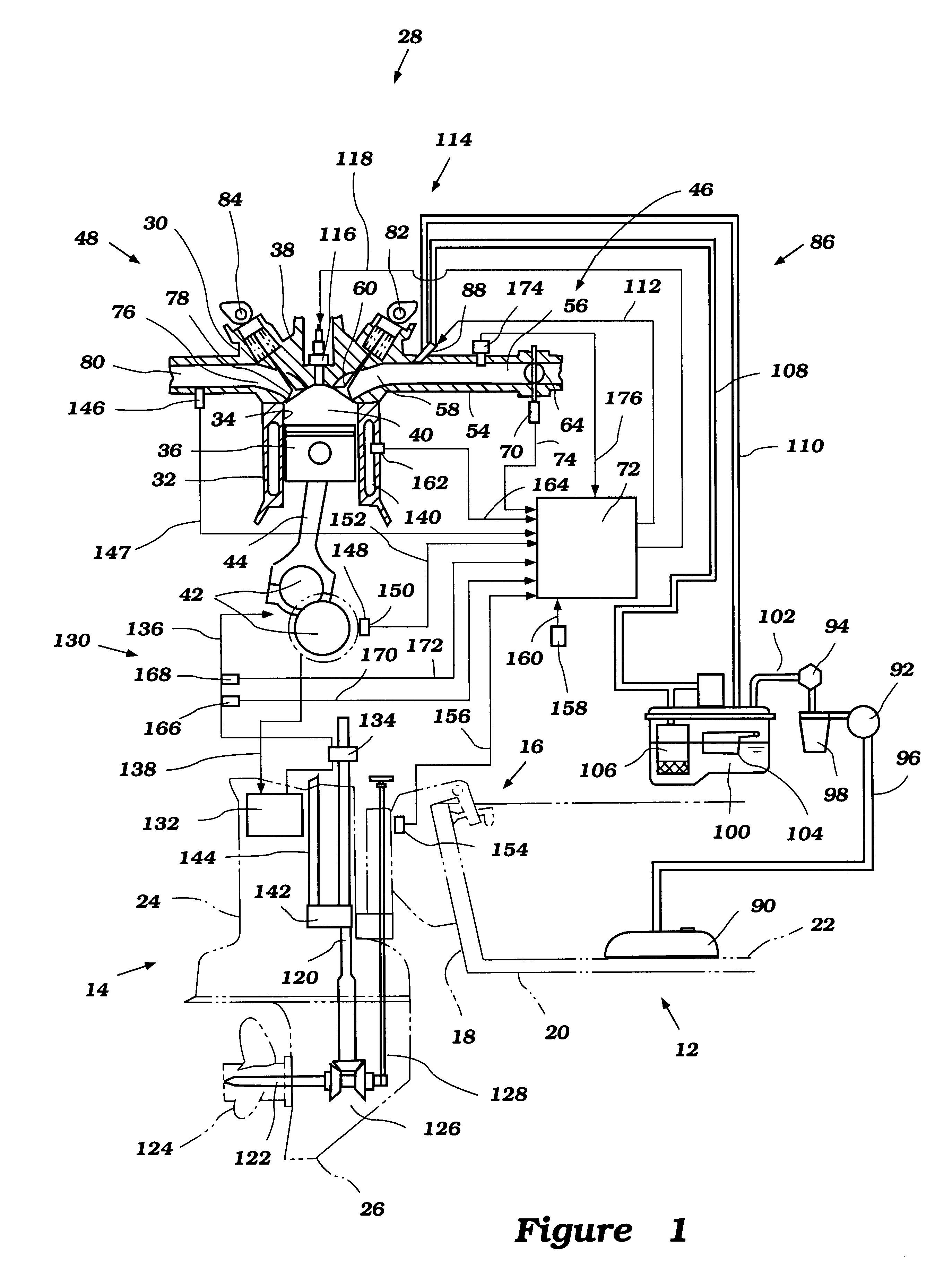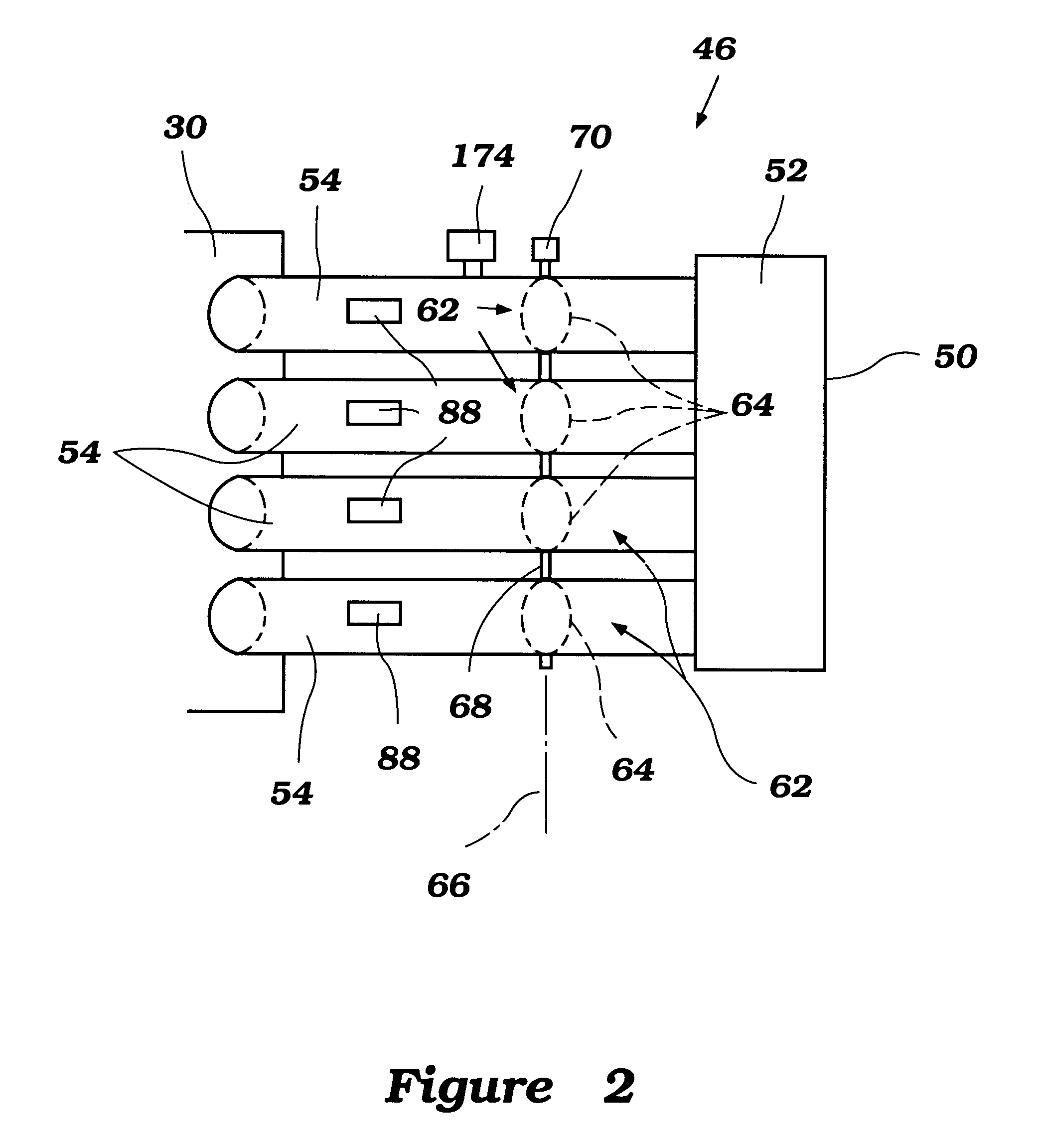Fuel injection control
a technology for controlling the fuel injection of the engine, which is applied in the direction of electric control, fuel injection control, machines/engines, etc., can solve the problems of increasing the volume of the engine, increasing the cost of the engine to manufacture, and the fact that the internal combustion engine does not reliably produce air-fuel charges
- Summary
- Abstract
- Description
- Claims
- Application Information
AI Technical Summary
Benefits of technology
Problems solved by technology
Method used
Image
Examples
Embodiment Construction
With initial reference to FIG. 1, an outboard motor 10 for powering a watercraft 12 is illustrated. The outboard motor 10 advantageously has an electronic control unit arranged and configured in accordance with certain features, aspects, and advantages of the present invention. The outboard motor 10 provides an exemplary environment in which the electronic control unit has particular utility. The electronic control unit of the present invention may also find utility in applications using internal combustion engines, such as, for example but without limitation, personal watercraft, small jet boats, off-road vehicles, racing vehicles, and heavy construction equipment.
In the illustrated embodiment, the outboard motor 10 comprises a drive unit 14 and a bracket assembly 16. Although schematically shown in FIG. 1, the bracket assembly 16 comprises a swivel bracket and a clamping bracket. The swivel bracket supports the drive unit 14 for pivotal movement about a generally vertically extend...
PUM
 Login to View More
Login to View More Abstract
Description
Claims
Application Information
 Login to View More
Login to View More - R&D
- Intellectual Property
- Life Sciences
- Materials
- Tech Scout
- Unparalleled Data Quality
- Higher Quality Content
- 60% Fewer Hallucinations
Browse by: Latest US Patents, China's latest patents, Technical Efficacy Thesaurus, Application Domain, Technology Topic, Popular Technical Reports.
© 2025 PatSnap. All rights reserved.Legal|Privacy policy|Modern Slavery Act Transparency Statement|Sitemap|About US| Contact US: help@patsnap.com



